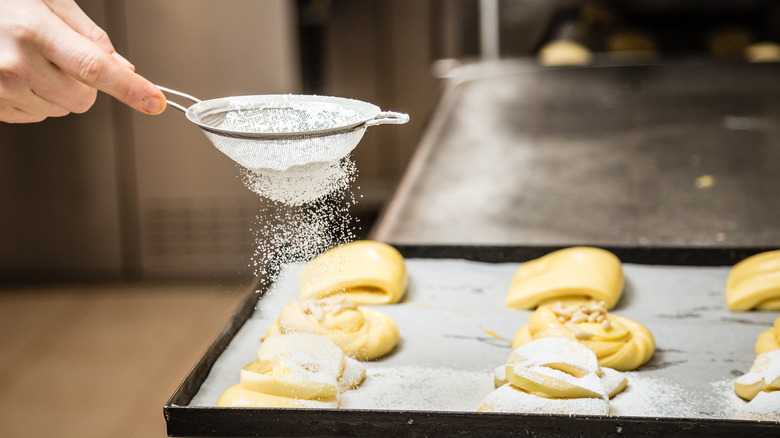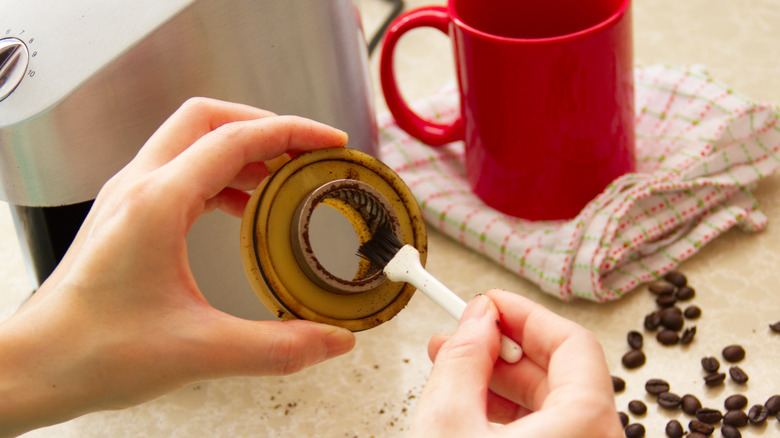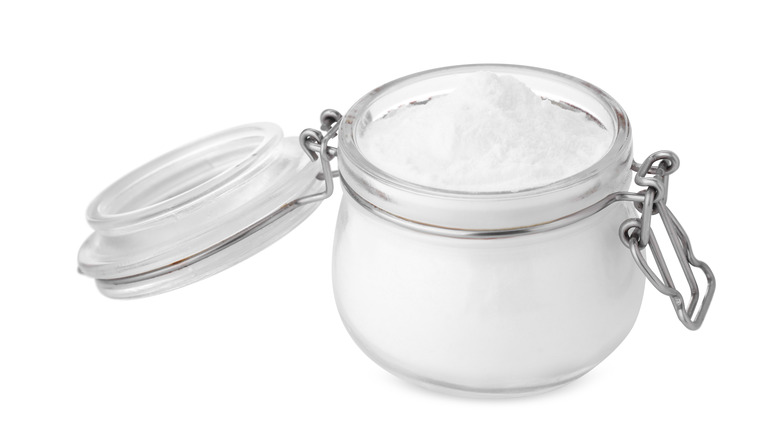It's Easy To Make Powdered Sugar In A Coffee Grinder. Just Make Sure You Clean It
Whether you use it to craft a sweet, homemade whipped cream or dust it over freshly baked pastries, powdered sugar is a baker's best friend. But, if you spend extra money buying both table sugar and powdered sugar, there's a cheeky kitchen hack for saving a few extra bucks by making your own powdered sugar at home. Don't worry — you don't have to go full farmer and harvest sugarcane — all you need is a coffee grinder.
Chemically speaking, granulated table sugar is the exact same substance as powdered sugar. The only difference? Powdered sugar is pulverized to develop that defining soft, fluffy, and fine texture. Coffee grinders are designed to pulverize coffee beans into fine particles, but when you place granulated sugar into the grinder instead of beans, the blades repeatedly cut and crush the sugar crystals and gradually reduce their size until you're left with a batch of powdered sugar. It's that easy.
Simple as it is, though, cleaning the coffee grinder before making powdered sugar is critical. Residual coffee grounds can transfer their flavor to the sugar, leading to unexpected and unwanted flavors in your powdered sugar. Random coffee particles can also compromise the fluffy texture you want to achieve when making powdered sugar, rendering it less-than-effective. And unless you want sugar-tinted coffee grounds, you'll want to thoroughly clean the grinder after making powdered sugar as well.
Cleaning and grinding tips
Making powdered sugar in a coffee grinder and cleaning it before and after doesn't require any over-the-top skills, but even simple tasks come with guidelines. And, just because it's easy doesn't mean it can't be tedious. Bear in mind that changes in volume will occur when grinding granulated sugar into powdered sugar. About half a cup of granulated sugar will yield one cup of powdered sugar, but measurement variations can occur depending on the crystal sizes in your table sugar. Once you begin pulverizing the sugar, slowly pulse or crank the grinder and take occasional breaks to prevent the grinder from overheating, which can melt the sugar and damage the blades. Once the sugar has reached a powdered consistency, introduce one tablespoon of cornstarch for every cup of sugar you have made to prevent caking and clumping.
Now, let's get to cleaning. If your grinder can be disassembled, take apart the hopper, burrs, and any other removable components before using a dry brush or a soft, dry cloth to remove as much residue as possible from its inner workings. From there, a damp towel or moist paper towel can remove any leftover coffee grounds or powdered sugar. If you have a blade grinder, you can also fill it with dry rice and pulse or crank it for about a minute — the abrasive texture and absorbent quality of the rice can help scrub away lingering coffee grounds or sugar.
Storing homemade powdered sugar
Like all foods, it's important to properly store homemade powdered sugar. Some coffee grinders come equipped with a lid, but because they're not entirely air-tight, they're not the best option for long-term storage. But, is it even possible for powdered sugar to expire?
Well, there's good news and bad news. When powdered sugar is stored according to proper food safety practices, it will last indefinitely. However, prolonged exposure to air or any exposure to moisture can damage and destroy its quality. Once you've made your powdered sugar, transfer it into an air-tight container such as a mason jar, a lidded food storage container, or a resealable bag. Make sure to keep the container in a cool, dark, and dry place that's also frequently cleaned to avoid any bugs or pests making their way into the container. Although it sounds elementary, if you notice mold or any other organic growth in the sugar, toss it and replace it with a freshly ground batch. Whether you're using a burr grinder or blade grinder, give your coffee bean pulverizer new responsibilities and save a penny or two by making powdered sugar at home.


